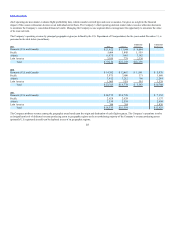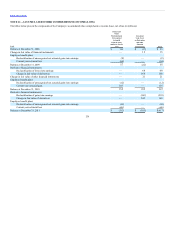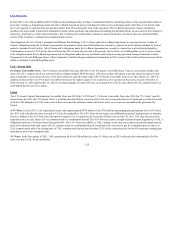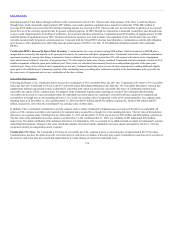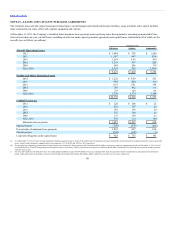United Airlines 2011 Annual Report Download - page 132
Download and view the complete annual report
Please find page 132 of the 2011 United Airlines annual report below. You can navigate through the pages in the report by either clicking on the pages listed below, or by using the keyword search tool below to find specific information within the annual report.
Table of Contents
Aircraft fuel is the Company’s single largest operating expense. In addition, aircraft fuel is a globally traded commodity with significant price volatility.
Aircraft fuel prices fluctuate based on market expectations of supply and demand, among other factors. Increases in fuel prices may adversely impact the
Company’s financial performance, operating cash flows and financial position as greater amounts of cash may be required to obtain aircraft fuel for
operations. To protect against increases in the prices of aircraft fuel, the Company routinely hedges a portion of its future fuel requirements. The Company
uses fixed price swaps, purchased call options, collars or other commonly used financial hedge instruments based on aircraft fuel or closely related
commodities, such as heating oil, diesel fuel and crude oil. The Company strives to maintain fuel hedging levels and exposure such that the Company’s fuel
cost is not disproportionate to the fuel costs of its major competitors. The Company does not enter into derivative instruments for non-risk management
purposes.
Prior to April 1, 2010, United’s instruments classified as economic hedges were not designated as cash flow or fair value hedges under accounting principles
related to hedge accounting. All changes in the fair value of economic hedges were recorded in income, with the offset to either current assets or liabilities in
each reporting period. Economic fuel hedge gains and losses were classified as part of aircraft fuel expense, and fuel hedge gains and losses from instruments
that are not deemed economic hedges were classified as part of nonoperating income (expense).
Effective April 1, 2010, United designated substantially all of its outstanding fuel derivative contracts as cash flow hedges under applicable accounting
standards. In addition, substantially all new fuel derivative contracts entered into subsequent to April 1, 2010 by United were designated as cash flow hedges.
Continental applied cash flow hedge accounting for all periods presented in these financial statements.
Accounting pronouncements pertaining to derivative instruments and hedging are complex with stringent requirements, including documentation of hedging
strategy, statistical analysis to qualify a commodity for hedge accounting both on a historical and a prospective basis, and strict contemporaneous
documentation that is required at the time each hedge is designated as a cash flow hedge. As required, the Company assesses the effectiveness of each of its
individual hedges on a quarterly basis. The Company also examines the effectiveness of its entire hedging program on a quarterly basis utilizing statistical
analysis. This analysis involves utilizing regression and other statistical analyses that compare changes in the price of aircraft fuel to changes in the prices of
the commodities used for hedging purposes.
Upon proper qualification, the Company accounts for its fuel derivative instruments as cash flow hedges. All derivatives designated as hedges that meet
certain requirements are granted special hedge accounting treatment. Generally, utilizing the special hedge accounting, all periodic changes in fair value of the
derivatives designated as hedges that are considered to be effective are recorded in accumulated other comprehensive income (loss) (“AOCI”) until the
underlying fuel is consumed and recorded in fuel expense. The Company is exposed to the risk that its hedges may not be effective in offsetting changes in the
cost of fuel and that its hedges may not continue to qualify for special hedge accounting. Hedge ineffectiveness results when the change in the fair value of the
derivative instrument exceeds the change in the value of the Company’s expected future cash outlay to purchase and consume fuel. To the extent that the
periodic changes in the fair value of the derivatives are not effective, that ineffectiveness is classified as other nonoperating income (expense).
If the Company terminates a derivative prior to its contractual settlement date, then the cumulative gain or loss recognized in AOCI at the termination date
remains in AOCI until the forecasted transaction occurs. In a situation where it becomes probable that a hedged forecasted transaction will not occur, any gains
and/or losses that have been recorded to AOCI would be required to be immediately reclassified into earnings. All cash flows associated with purchasing and
settling derivatives are classified as operating cash flows in the statements of cash flow.
The Company records each derivative instrument as a derivative asset or liability (on a gross basis) in its consolidated balance sheets and, accordingly,
records any related collateral on a gross basis. The table below
131




